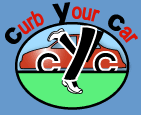|
Kristen Brennan
Curb Your Car Coalition
The debate about how to measure environmental damage
and pollution often clouds the true impact of vehicular
traffic on our air, water, and soils. Some measure environmental
degradation in terms of the monetary costs associated
with clean-up, disposal of hazardous waste, or lost productivity.
Others measure environmental damage in biological terms
- the fragmentation of animal habitats, the number of
animals killed by cars, the genetic mutations occurring
in animals living in highly polluted areas, etc. Still
others argue for a measurement that addresses cars’
impacts on human interaction. No matter which ruler you
choose, the impact of America’s reliance on the
automobile has an enormous environmental impact.
For the economists among us, consider the following costs
associated with car use in North America. According to
the International Center for Technology Assessment, the
costs associated with localized air pollution attributable
to gasoline-powered automobiles include: decreased agricultural
yields ($2.1 to $4.2 billion), reduced visibility ($6.1
to $44.5 billion), and damage to buildings and materials
($1.2 to $9.6 billion). Global warming ($3 to $27.5 billion),
water pollution ($8.4 to $36.8 billion), noise pollution
($6 to $12 billion), and improper disposal of batteries,
tires, engine fluids, and junked cars ($4.4 billion) also
add to the environmental consequences wrought by automobiles.
While hybrid and fuel-cell powered cars are increasing
in popularity, when you use a life-costing and embodied
energy analysis, these new technologies do not seem the
dramatic improvement that the auto makers would have us
believe. One-third of a car’s environmental impact
is incurred during manufacturing. So before you even drive
the car off the lot, you’ve consumed vast amounts
of energy. A car’s consumable parts are also a major
source of toxic's in solid waste disposal. According to
the Union of Concerned Scientists, “a vehicle’s
rubber tires not only shed dust constantly during their
use (that has been linked to health problems in children
in urban areas), but they pose a serious disposal problem.
Lubricants, the lead used in batteries (some advance EV
batteries also involve heavy metals), antifreeze; spark
plugs, fuel filters, oil filters; the trash generated
by the automobile maintenance and repair industry is mostly
toxic, and ever increasing. [We] see no indication that
hybrid vehicles will result in a reduction of this environmental
cost; they use the same tires, consume the same motor
oil, and wear out the same discarded parts as a conventional
vehicle.”
The number of human and animal lives lost each year in
vehicular accidents is staggering. Car accidents are the
number one cause of death for children in the United States.
Air pollution from cars is estimated to cause 40,000 premature
deaths each year. In addition, roads not only break up
and destroy animal habitat, but the number of animals
killed each year by cars and trucks exceeds the number
of animals killed by hunting and animal research combined.
Cars are tools that should be used only with respect
for their destructive powers to both our natural and human
environment. |
